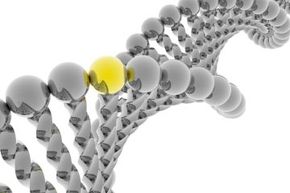Key Takeaways
- Genes are regulated through processes like transcription, where a protein called the transcription factor can either hide or reveal gene directions, effectively turning genes off or on.
- Epigenetics studies how environmental and lifestyle factors can change gene behavior without altering genetic makeup.
- Gene therapy is an emerging field aiming to treat or manage conditions by adding healthy genes to compensate for those that are missing, mutated or inactive.
Unless they schedule an appointment for highlights at the salon, many people who started out blond wave goodbye to their lighter-color hair as they grow up. Do the stresses of adulthood scare our childhood hair away? Or, let's take another example of a childhood trait lost to adulthood -- the ability to digest dairy. Thanks to an enzyme called lactase, most young children can digest milk. But as children grow older, it's common to lose that ability. What's happening here?
It all comes down to a process called gene regulation. This is how our genes are turned off and on, for minor things like hair color and vital functions like protection from cancer.
Advertisement
Within our bodies, we house trillions of cells, all busily going about doing their jobs while we enjoy our days. Each of those cells has a nucleus that contains our DNA -- genetic material passed on to us from our parents. DNA is composed of different sequences of our genes. These sequences hold directions for making the proteins that will carry out a cell's particular function. This is how one cell might end up being important to your kidneys, while another cell makes bone.
When a gene is turned off, it no longer provides the directions for making proteins. This means that the proteins needed to fulfill a particular job -- say, tolerate lactase -- aren't produced. Think about following driving directions on a GPS device in your car. What happens when you drive underground in a tunnel? The ground above you blocks the ability for your GPS to receive directions from its satellite. In other words, the directions are masked, and you might not know which way to go.
This metaphor is also a way of looking at gene regulation. However, when it comes to genes, it isn't a layer of dirt and metal obstructing the way. It could be one (or more) of a variety of factors: stages of your development, the environment, internal influences like hormones and genetic mutations. Keeping in mind this full range of factors also helps show that gene regulation isn't always a bad thing. Just as having to figure out our own directions every once in a while can be fulfilling to the explorer in all of us, turning certain genes off and on can be a completely natural process. Regulation can help our cells behave properly and aid us in adapting to our environment [source: National Center for Biotechnology Information].
Now that you have a brief overview on genetic regulation from afar, find out what's happening inside a cell to turn genes off and on.
Advertisement
